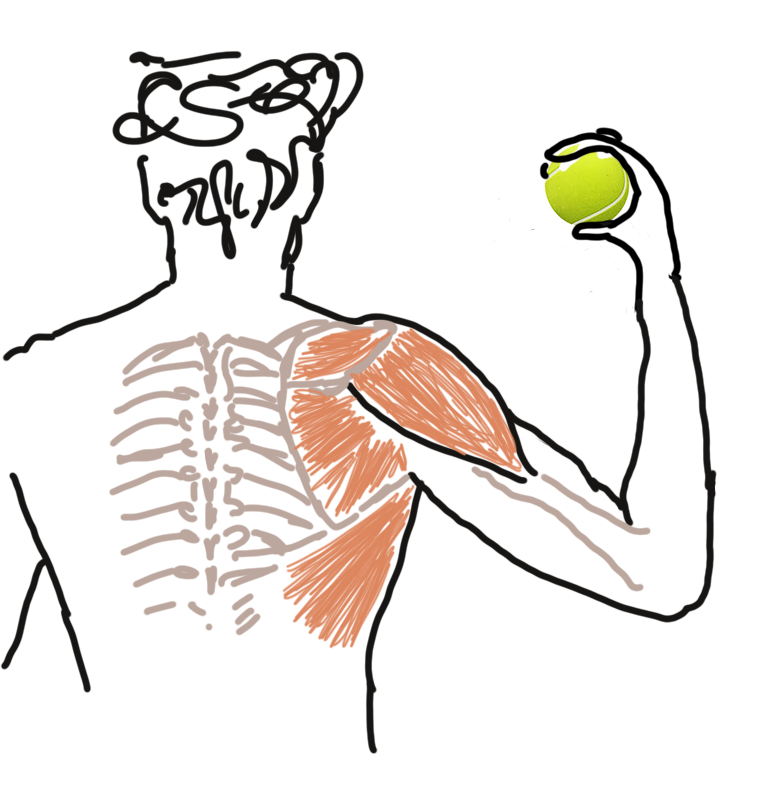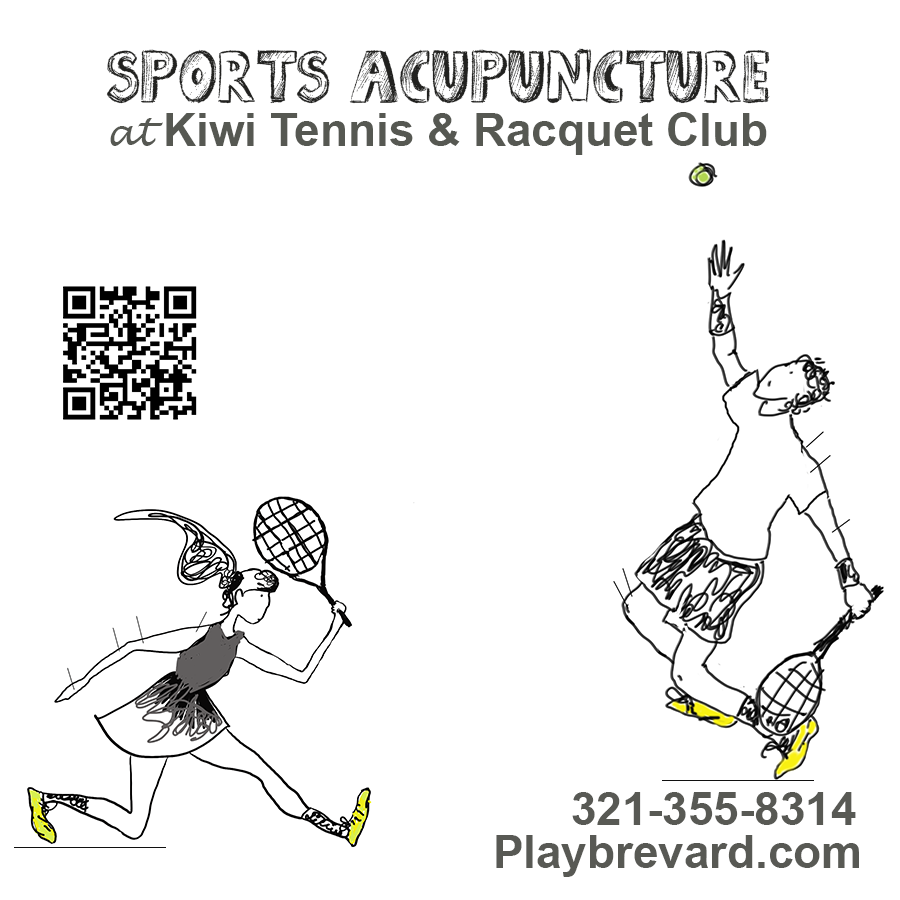The Origin of Shoulder Problems and How to Protect Your Rotator Cuff
If you have ever experienced shoulder pain, you know how frustrating it can be when trying to play tennis. You might find yourself modifying your swing or serve until several other parts of your body are overworked. Soon you are dealing with pain, discomfort, and trouble sleeping. Maybe you take a week off and hope to recover in time for the next league match. Then you start to play, and the pain comes back. Resting an injury will most likely not resolve the problem.
Understanding the root cause of your shoulder issues, is the first step toward optimal treatment and lasting recovery.
Book today with Dr. Mary Devereaux, an integrated sports physician, expert at addressing shoulder problems and preventing long-term damage.

Causes of Shoulder Pain
Shoulder problems often stem from chronic muscle tightness in areas like the neck, back, chest, and forearm. The shoulder joint is connected to a network of muscles, and when any of these muscles become tight, they place strain on the tendons—especially the rotator cuff tendons like the supraspinatus. These muscles hold bone to muscle, and when they tighten, they can cause misalignment and excessive force on the tendons, leading to pain or tears.
Poor Form: Incorrect swing mechanics, especially during serves and backhands, strain the rotator cuff.
Overuse: Repetitive motions from frequent play wear down shoulder muscles and tendons over time.
Hip Tightness: Limited hip movement forces the upper body to overcompensate, putting extra stress on the shoulder.
Lack of Shoulder Rotation: Insufficient rotation in swings or serves leads to excess stress on the rotator cuff.
Neck Tension: Tight muscles in the neck radiate pain and tension to the shoulder, worsening shoulder strain.
Weak Stabilizer Muscles: Weak shoulder stabilizers reduce proper shoulder movement and joint support.
Incorrect Grip: Holding the racket too tightly or improper grip technique can disrupt shoulder mechanics and cause strain.
Sleep Position: Consistently sleeping on one side or in awkward positions aggravates muscle imbalances and shoulder discomfort.
Inadequate Nutrition: Lack of essential nutrients (like protein, omega-3s, and vitamins) impairs muscle recovery and joint health.
Lack of Recovery Time: Insufficient rest after training or matches prevents the shoulder from healing, increasing the risk of chronic pain.
Why Acupuncture Helps
Acupuncture is a scientifically validated method for addressing muscular tightness and aiding recovery from strain. Its benefits include:
- Relaxing bound muscles: Acupuncture helps release muscle knots and tightness, enabling proper movement and reducing tendon strain (Zhang et al., 2019).
- Improving circulation: The therapy increases blood flow to overused areas, promoting the delivery of essential nutrients and oxygen needed for tissue repair (Vickers et al., 2018).
- Stimulating stabilizer muscles: Acupuncture can activate smaller muscles that support joint stability, improving overall strength and balance (Kim et al., 2020).
- Promoting muscle balance: By helping realign muscle groups, acupuncture supports joint health and reduces stress on overcompensating muscles (MacPherson et al., 2017).

Nutrition You Need to Recover
Why You Need Protein:
Protein is crucial for muscle repair and growth, especially after exercise or injury. It also helps to support overall body function by repairing tissues, building enzymes, and maintaining immune health. Adequate protein intake ensures your body can recover and stay strong.
Top 10 Lean Protein Sources:
- Chicken breast
- Turkey
- Fish (salmon, cod, tuna)
- Lean beef
- Tofu
- Lentils
- Chickpeas
- Quinoa
- Eggs
- Dairy

Why You Need Magnesium:
Magnesium aids in muscle relaxation and recovery, reducing cramps, and helping maintain muscle function. It also supports energy production, making it key for athletic performance.
Top 10 Magnesium Sources:
- Almonds
- Cashews
- Pumpkin seeds
- Spinach
- Swiss chard
- Dark chocolate
- Avocados
- Black beans
- Quinoa
- Whole grains (brown rice, oats)
Why You Need Calcium and Vitamin D:
These nutrients are vital for maintaining bone density and strength, which is especially important for athletes or anyone engaging in regular physical activity. Vitamin D also helps in the absorption of calcium, ensuring optimal bone health.
Top 10 Sources of Calcium and Vitamin D:
- Moringa
- Leafy greens (kale, spinach)
- Dairy (milk, yogurt, cheese)
- Sardines (with bones)
- Salmon
- Tofu (fortified with calcium)
- Sesame seeds
- Basil
- Dandelion greens
- Silica (from diatomaceous earth, click here for more info)
Why You Need Omega-3 Fatty Acids:
Omega-3s are essential for reducing inflammation, improving joint flexibility, and supporting brain health. They also help reduce muscle soreness after intense physical activity, making them vital for athletes.
Top 10 Omega-3 Sources:
- Sardines
- Salmon
- Mackerel
- Chia seeds
- Flaxseeds
- Walnuts
- Hemp seeds
- Algal oil (for plant-based)
- Herring
- Anchovies
References
Kim, H. J., Shin, B. C., Lee, M. S., Lee, H., & Ernst, E. (2020). Acupuncture for treating acute musculoskeletal pain in sports. Journal of Orthopedic Science, 25(2), 234-240.
MacPherson, H., Vertosick, E., Lewith, G., Linde, K., Sherman, K. J., Witt, C. M., & Vickers, A. J. (2017). Influence of control group on effect size in trials of acupuncture for chronic pain: A secondary analysis of an individual patient data meta-analysis. PLoS One, 12(4), e0173861.
Vickers, A. J., Vertosick, E. A., Lewith, G., MacPherson, H., Foster, N. E., Sherman, K. J., … & Witt, C. M. (2018). Acupuncture for chronic pain: update of an individual patient data meta-analysis. The Journal of Pain, 19(5), 455-474.
Zhang, J., Cao, H., Zhang, C., & Shen, X. (2019). Acupuncture treatment for chronic musculoskeletal pain: A systematic review and meta-analysis. Journal of Pain Research, 12, 2065-2084.